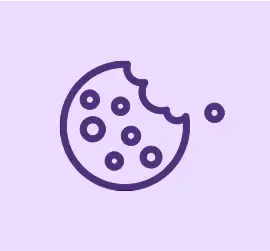Understanding peanut allergy
When your child has a peanut allergy, the body’s immune system mistakenly overreacts to peanut protein (allergen) as if it is harmful.1
The body creates antibodies called immunoglobulin E (IgE) against the allergen in the food, which cause your child’s body to have an allergic reaction.1,2
Peanuts shown are for illustrative purposes only.

Who is affected by peanut allergy?

in the United States
are affected.3,4

with food allergies have experienced a severe allergic reaction such as anaphylaxis.4

with a peanut allergy had 1 peanut-related emergency room visit within 1 year.4*
*In a US representative sample of 38,408 children <18 years with peanut allergy (surveyed in 2015–2016).4
Avoiding foods and other products that contain peanuts is essential to reduce the risk of a severe
allergic reaction.2
Even a tiny amount, such as 1/100th of a peanut, can be dangerous to a peanut-allergic child.5,6 No matter how careful you are, your child may still accidentally eat small amounts of peanut due to:




While there is no cure for peanut allergy, oral immunotherapy (OIT) is a type of medically-supervised treatment that helps the immune system gradually increase tolerability to peanut.11,12
Unlike other ways used to manage food allergies, OIT aims to slowly increase the amount of peanut your child can consume in small, controlled doses, so the immune system gradually becomes less sensitive.13,14
The patient images are AI generated and are not real patients treated with PALFORZIA. Individual results will vary with each patient.



Body is gradually exposed to increasing amounts of peanut.13

The body’s immune system builds up the ability to handle exposure to peanut over time.13

The immune system becomes less sensitive,* and allergic reactions may become mild or may not occur at all, in the event of accidental exposure.13
It is still important to maintain a peanut-free diet while on OIT.12
*Daily immunotherapy treatment must be continued to maintain the reduced sensitivity effect.
Peanuts shown are for illustrative purposes only.
Learn more about PALFORZIA treatment
The patient images are AI generated and are not real patients treated with PALFORZIA. Individual results will vary with each patient.


References:
PALFORZIA can cause severe allergic reactions called anaphylaxis that may be life-threatening and can occur at any time during PALFORZIA therapy.
PALFORZIA is a treatment for people who are allergic to peanuts. PALFORZIA can help reduce the severity of allergic reactions, including anaphylaxis, that may occur with accidental exposure to peanut. PALFORZIA may be started in patients aged 1 through 17 years old. If you turn 18 years of age while on PALFORZIA treatment you should continue taking PALFORZIA unless otherwise instructed by your doctor. PALFORZIA does NOT treat allergic reactions and should not be given during an allergic reaction, including anaphylaxis. You must maintain a strict peanut-free diet while taking PALFORZIA.
Stop taking PALFORZIA and get emergency medical treatment right away if you have any of the following symptoms after taking PALFORZIA:
Because of the risk of severe allergic reactions, PALFORZIA is only available through a restricted program called the PALFORZIA Risk Evaluation and Mitigation Strategy (REMS) Program. PALFORZIA is a prescription only medication. Talk to your healthcare provider for more information about the PALFORZIA REMS program and how to enroll.
You should NOT take PALFORZIA if you have uncontrolled asthma, or if you ever had eosinophilic esophagitis (EoE) or other eosinophilic gastrointestinal disease.
Tell your doctor if you are not feeling well prior to starting treatment with PALFORZIA. Your doctor may decide to delay treatment until you are feeling better. Also tell your doctor about any medical conditions you have and if you are taking or have recently taken any other medicines, including medicines obtained without a prescription and herbal supplements.
Your doctor may decide that PALFORZIA is not the best treatment if:
What are the possible side effects of PALFORZIA?
The most commonly reported side effects of PALFORZIA in ages 1 through 3 years were: cough, sneezing, runny nose, nasal congestion, throat irritation, wheezing, stomach pain, vomiting, diarrhea, itchy mouth, pain in the throat, hives, rash, itchy skin, and/or inflammation of the skin around the mouth.
The most commonly reported side effects of PALFORZIA in ages 4 through 17 years were: stomach pain, vomiting, feeling sick, itching or burning in the mouth, throat irritation, cough, runny nose, sneezing, throat tightness, wheezing, shortness of breath, itchy skin, hives, and/or itchy ears.
PALFORZIA can cause severe allergic reactions called anaphylaxis that may be life-threatening.
PALFORZIA can cause stomach or gut symptoms including inflammation of the esophagus (called eosinophilic esophagitis). Symptoms of eosinophilic esophagitis can include:
For additional information on PALFORZIA and/or the possible side effects, talk with your doctor or pharmacist.
Please see full Prescribing Information, including Boxed WARNING and Medication Guide.
You are encouraged to report negative side effects of prescription drugs to the FDA. Visit www.fda.gov/medwatch or call 1-800-FDA-1088.